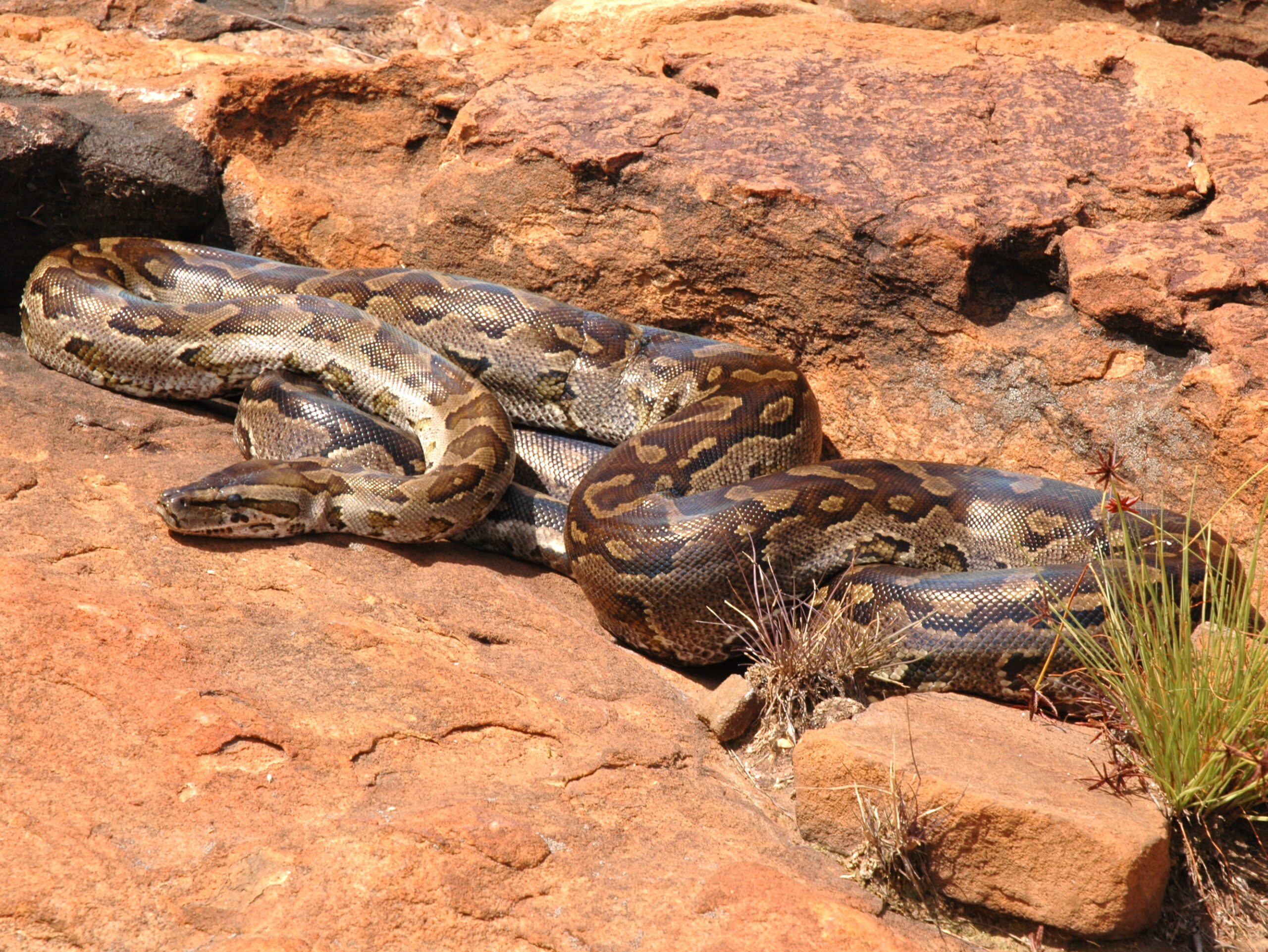African Rock Python: The Mighty Constrictor of Africa – Insights into Its Behavior, Habitat, and Conservation
Discover the African rock python, one of Africa’s most powerful constrictors. Learn about its impressive size, hunting techniques, habitat preferences, and the conservation efforts needed to protect this formidable snake.
Introduction to the African Rock Python: Africa’s Powerful Constrictor. The African rock python (Python sebae) is one of Africa’s largest and most formidable snakes, known for its impressive size and strength. As a powerful constrictor, it plays a crucial role in its ecosystem, controlling the populations of various prey species. This majestic serpent is a symbol of the continent’s rich biodiversity and offers a fascinating glimpse into the world of large constrictor snakes. Despite its status as an apex predator in its environment, the African rock python faces several conservation challenges, making it important to understand its behavior, habitat, and the efforts required to ensure its survival.

Africa Wildlife Safari Experience
Physical Characteristics: Size and Strength
The African rock python is renowned for its impressive size, with adults commonly reaching lengths of 10 to 16 feet, and some individuals exceeding 20 feet. They are robustly built, with muscular bodies and thick, powerful coils that enable them to constrict their prey effectively. Their coloration varies, typically featuring a pattern of brown, beige, and black markings that provide excellent camouflage in their natural habitats. The scales of the African rock python are smooth and glossy, aiding in its movement through various environments. Their powerful jaws, equipped with sharp teeth, are designed for gripping and holding onto their prey. This combination of size, strength, and camouflaged appearance makes the African rock python a highly efficient predator.
Behavior and Hunting Techniques: Constriction and Camouflage
The African rock python employs a constriction method to subdue its prey, a technique that involves wrapping its muscular body around the victim and squeezing until it suffocates. This method is highly effective for handling large prey, which can include mammals such as antelope, warthogs, and small ungulates. The python’s hunting strategy relies on stealth and ambush; it often remains motionless and camouflaged, waiting for an opportunity to strike. When prey comes within striking distance, the snake uses its powerful muscles to launch a rapid attack, grasping the prey with its jaws and initiating the constriction process. The African rock python’s ability to camouflage itself and remain hidden while waiting for prey is a key factor in its hunting success.
Habitat and Distribution: Diverse Environments
The African rock python is distributed across a wide range of habitats throughout sub-Saharan Africa, including savannas, forests, wetlands, and rocky outcrops. It is highly adaptable and can thrive in both terrestrial and semi-aquatic environments. The python often seeks shelter in burrows, under rocks, or in dense vegetation, where it can remain concealed from potential threats and prey. Its preference for areas near water sources, such as rivers and swamps, is driven by the availability of prey and suitable basking sites. The African rock python’s ability to adapt to various environmental conditions contributes to its widespread distribution, but habitat loss and degradation pose significant threats to its populations.
Reproduction and Lifecycle: Growth and Development
African rock pythons exhibit a seasonal breeding pattern, with mating typically occurring during the warmer months. Females lay clutches of 20 to 100 eggs, which are deposited in a suitable nesting site, such as a burrow or a pile of vegetation. The female python incubates the eggs by coiling around them and generating warmth through muscular contractions. After an incubation period of approximately 2 to 3 months, the eggs hatch, and the hatchlings emerge with a length of about 2 feet. Hatchlings are independent from birth and must fend for themselves, feeding on small prey such as rodents and insects. As they grow, African rock pythons undergo several molts, shedding their skin to accommodate their increasing size. Their growth rate is influenced by factors such as food availability and environmental conditions. The lifespan of African rock pythons in the wild can reach up to 20 years, with some individuals living longer in captivity.
Conservation Status: Challenges and Protection Efforts
The African rock python is currently classified as a species of “Least Concern” by the International Union for Conservation of Nature (IUCN), indicating that it is not considered to be at immediate risk of extinction. However, several conservation challenges threaten its populations. Habitat loss due to deforestation, agricultural expansion, and urban development reduces the availability of suitable environments for the python. Additionally, the African rock python faces threats from hunting and the illegal wildlife trade, as its skin is valuable for leather products and its body is sometimes targeted for use in traditional medicine. Conservation efforts are focused on addressing these challenges through habitat protection, anti-poaching measures, and education programs that promote the importance of conserving this apex predator. Monitoring programs help track population trends and assess the effectiveness of conservation strategies.
Conclusion: Ensuring the Survival of the African Rock Python
The African rock python, with its impressive size, strength, and adaptability, is a key component of Africa’s diverse wildlife. Protecting this apex predator requires a multifaceted approach that addresses habitat loss, human-wildlife conflict, and other conservation challenges. By supporting efforts to conserve their natural habitats, combat illegal wildlife trade, and promote sustainable practices, we can help ensure the survival of the African rock python. Their continued presence in Africa’s ecosystems not only maintains ecological balance but also provides valuable insights into the behavior and biology of large constrictor snakes. Through dedicated conservation efforts and global awareness, we can contribute to the preservation of the African rock python and support the broader goal of protecting Africa’s rich and varied wildlife.

